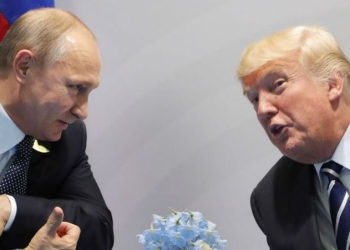The FINANCIAL — Distributed ledger technology (DLT) could reshape finance. But current approaches to how some blockchains (a form of DLT) are governed pose questions about the level of responsibility, accountability, and control relative to existing critical financial infrastructure according to Bank of England.
Financial services could be reshaped by a range of new technologies, including DLT. DLT and programmable ‘smart contracts’ may enable a different – potentially simpler – network of relationships in financial markets, which could bring a number of benefits including greater efficiency and enhanced resilience, if the technology is governed effectively.
Blockchains – a subset of DLT – underpin cryptoassets. As of mid-December 2022, cryptoassets had a total market capitalisation of around US$850 billion. Ethereum is the blockchain that hosts the most crypto-related activity: it hosts around 4,400 Opens in a new window different tokens with a combined market capitalisation of around US$380 billion, it accounts for over 60% Opens in a new window of total value locked in decentralised finance protocols, and it processes around one million transactions Opens in a new window per day.
According to Bank of England. Ethereum is an example of a ‘permissionless’ blockchain, meaning participation in the network is not controlled by a central entity. In addition, anyone can propose changes to the network, though broad consensus among users is needed for changes to be implemented. By contrast, a ‘permissioned’ blockchain has a central entity that controls the access and privileges of network participants.
In September, Ethereum underwent a major operational event known as ‘The Merge’ Opens in a new window, which transitioned the blockchain to a ‘Proof-of-Stake’ consensus mechanism (more information at ethereum.org). The Merge represented the culmination of years of planning and testing by a group of core developers, co-ordinated by the Ethereum Foundation Opens in a new window (which plays a prominent role in the network but does not control it).
The Merge highlights a range of questions about the governance of permissionless blockchains. The event posed a number of operational and technological risks, and hence raises question, including: what if it had gone wrong? Who would have been responsible for, and had the authority to, co-ordinate a timely solution? Who would have been accountable/liable for any financial losses incurred by others as a result?
In the traditional financial system, critical financial infrastructure is regulated to deliver an appropriate level of responsibility, accountability, and control. In the future, critical third parties providing material services to the UK financial sector (eg cloud service providers) may also be subject to regulatory requirements. So, there is a question as to what appropriate regulatory oversight of a blockchain could entail, were it to become a more critical piece of infrastructure in the financial system.
Blockchains do not constitute critical financial infrastructure (yet). But they could conceivably become so in the future if cryptoasset activity and its interconnectedness with the wider financial system continue to develop. So, it is important that relevant authorities find legal mechanisms and means of co-ordinated action to ensure that an equivalent regulatory outcome is delivered.
Distributed ledger technology (DLT) could reshape finance. But current approaches to how some blockchains (a form of DLT) are governed pose questions about the level of responsibility, accountability, and control relative to existing critical financial infrastructure.
inancial services could be reshaped by a range of new technologies, including DLT. DLT and programmable ‘smart contracts’ may enable a different – potentially simpler – network of relationships in financial markets, which could bring a number of benefits including greater efficiency and enhanced resilience, if the technology is governed effectively.
Blockchains – a subset of DLT – underpin cryptoassets. As of mid-December 2022, cryptoassets had a total market capitalisation of around US$850 billion. Ethereum is the blockchain that hosts the most crypto-related activity: it hosts around 4,400 Opens in a new window different tokens with a combined market capitalisation of around US$380 billion, it accounts for over 60% Opens in a new window of total value locked in decentralised finance protocols, and it processes around one million transactions Opens in a new window per day.
Ethereum is an example of a ‘permissionless’ blockchain, meaning participation in the network is not controlled by a central entity. In addition, anyone can propose changes to the network, though broad consensus among users is needed for changes to be implemented. By contrast, a ‘permissioned’ blockchain has a central entity that controls the access and privileges of network participants.
In September, Ethereum underwent a major operational event known as ‘The Merge’ Opens in a new window, which transitioned the blockchain to a ‘Proof-of-Stake’ consensus mechanism (more information at ethereum.org). The Merge represented the culmination of years of planning and testing by a group of core developers, co-ordinated by the Ethereum Foundation Opens in a new window (which plays a prominent role in the network but does not control it).
The Merge highlights a range of questions about the governance of permissionless blockchains. The event posed a number of operational and technological risks, and hence raises question, including: what if it had gone wrong? Who would have been responsible for, and had the authority to, co-ordinate a timely solution? Who would have been accountable/liable for any financial losses incurred by others as a result?
In the traditional financial system, critical financial infrastructure is regulated to deliver an appropriate level of responsibility, accountability, and control. In the future, critical third parties providing material services to the UK financial sector (eg cloud service providers) may also be subject to regulatory requirements. So, there is a question as to what appropriate regulatory oversight of a blockchain could entail, were it to become a more critical piece of infrastructure in the financial system.
Blockchains do not constitute critical financial infrastructure (yet). But they could conceivably become so in the future if cryptoasset activity and its interconnectedness with the wider financial system continue to develop. So, it is important that relevant authorities find legal mechanisms and means of co-ordinated action to ensure that an equivalent regulatory outcome is delivered.





























Discussion about this post